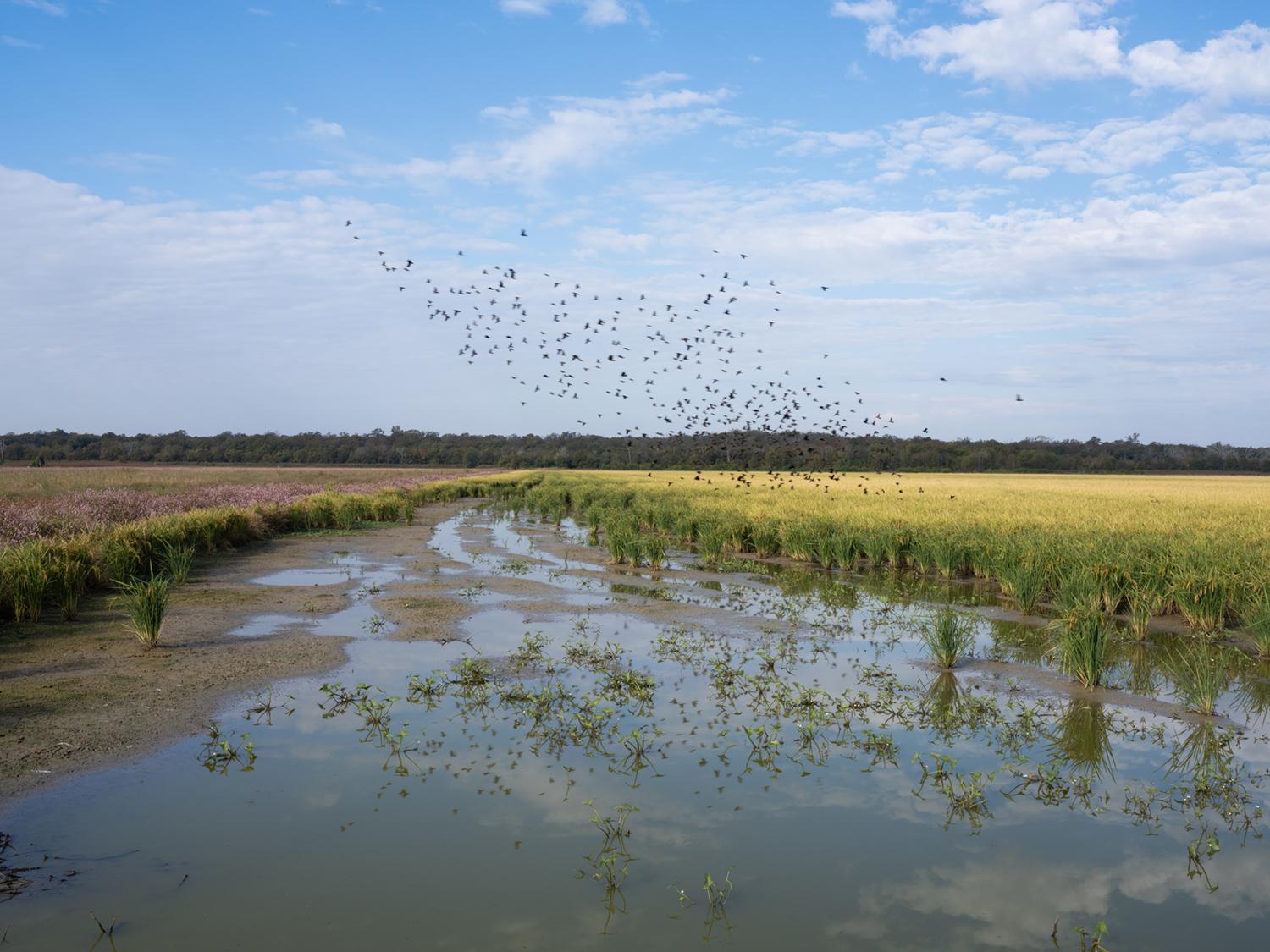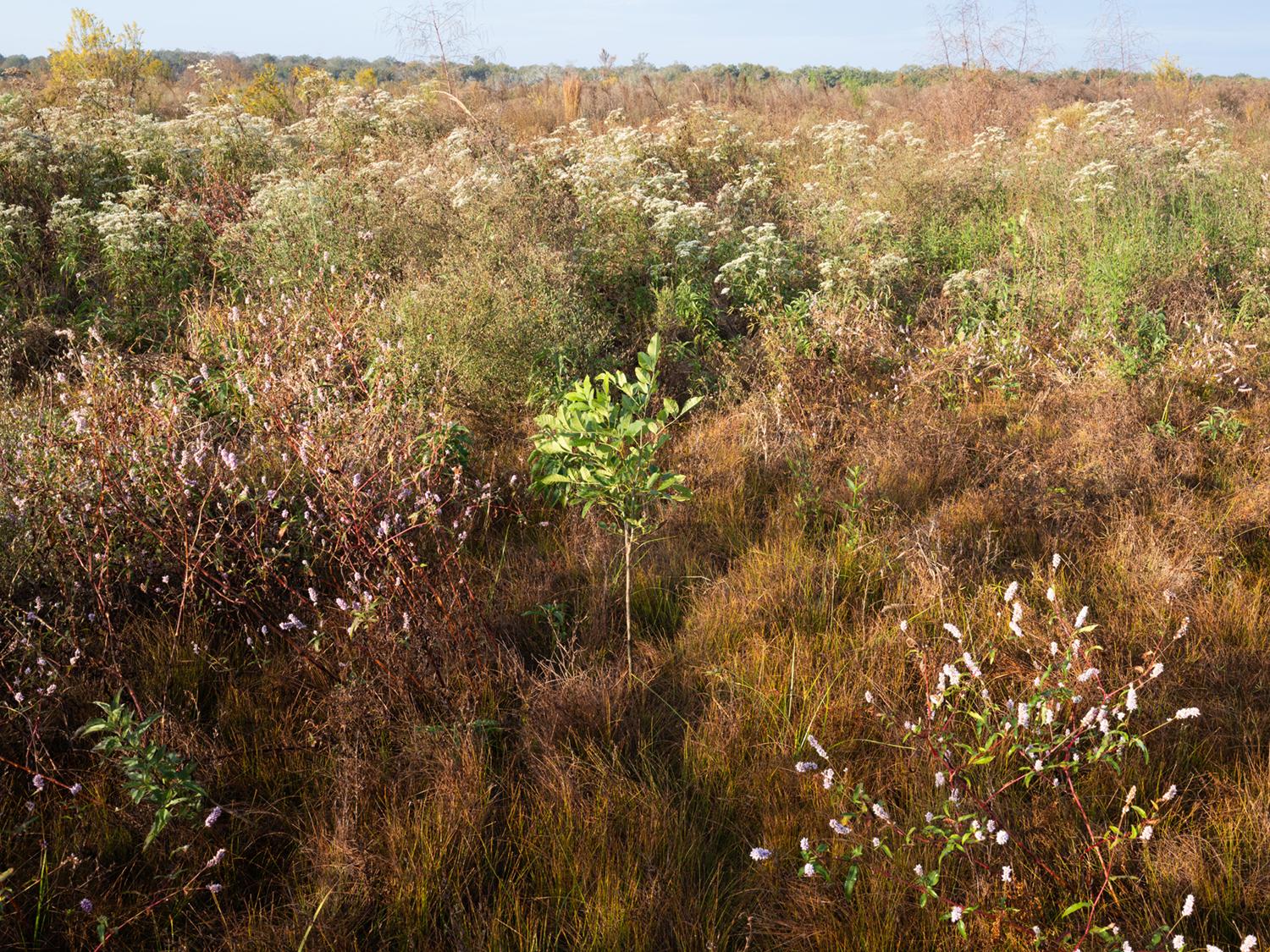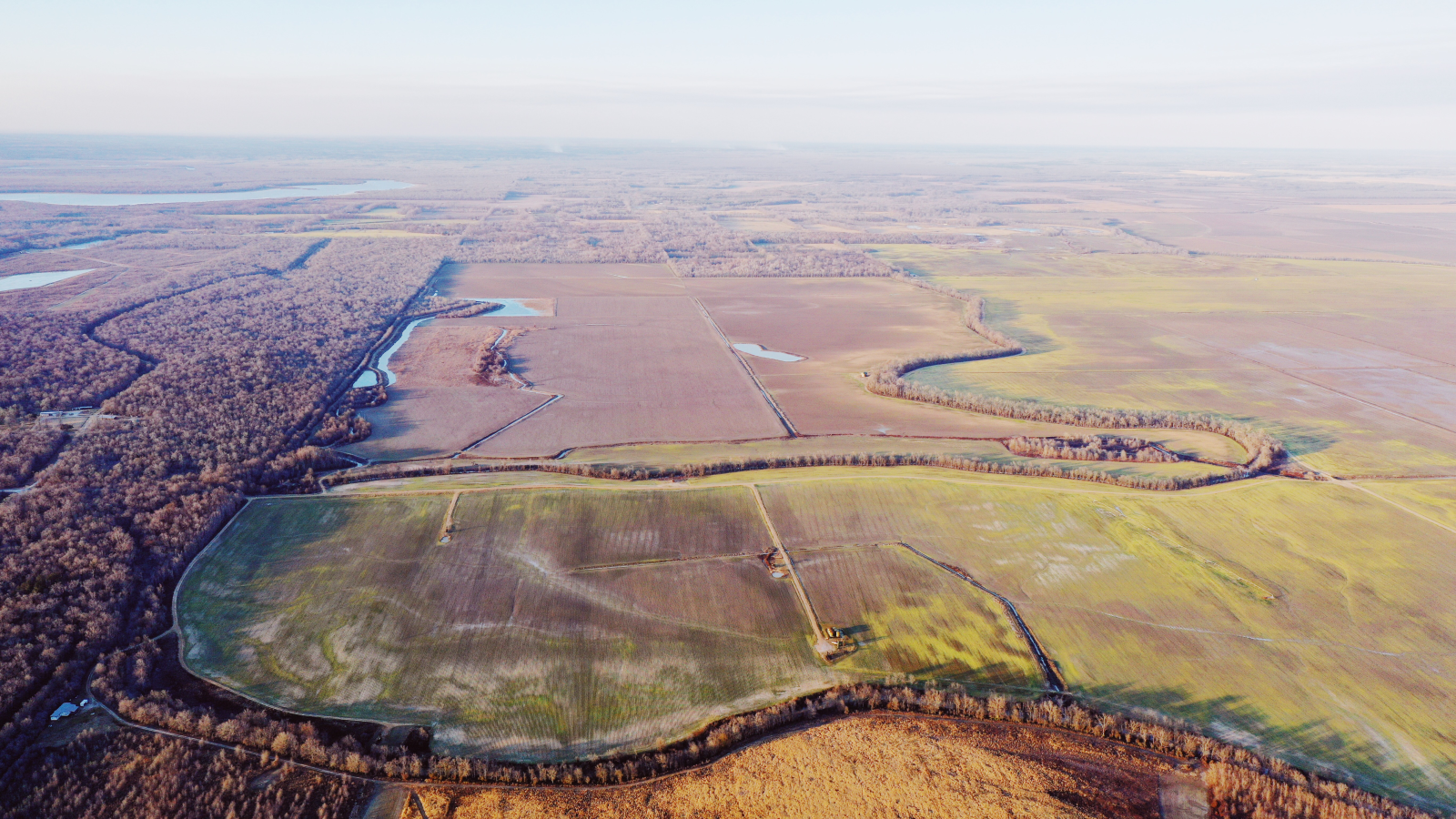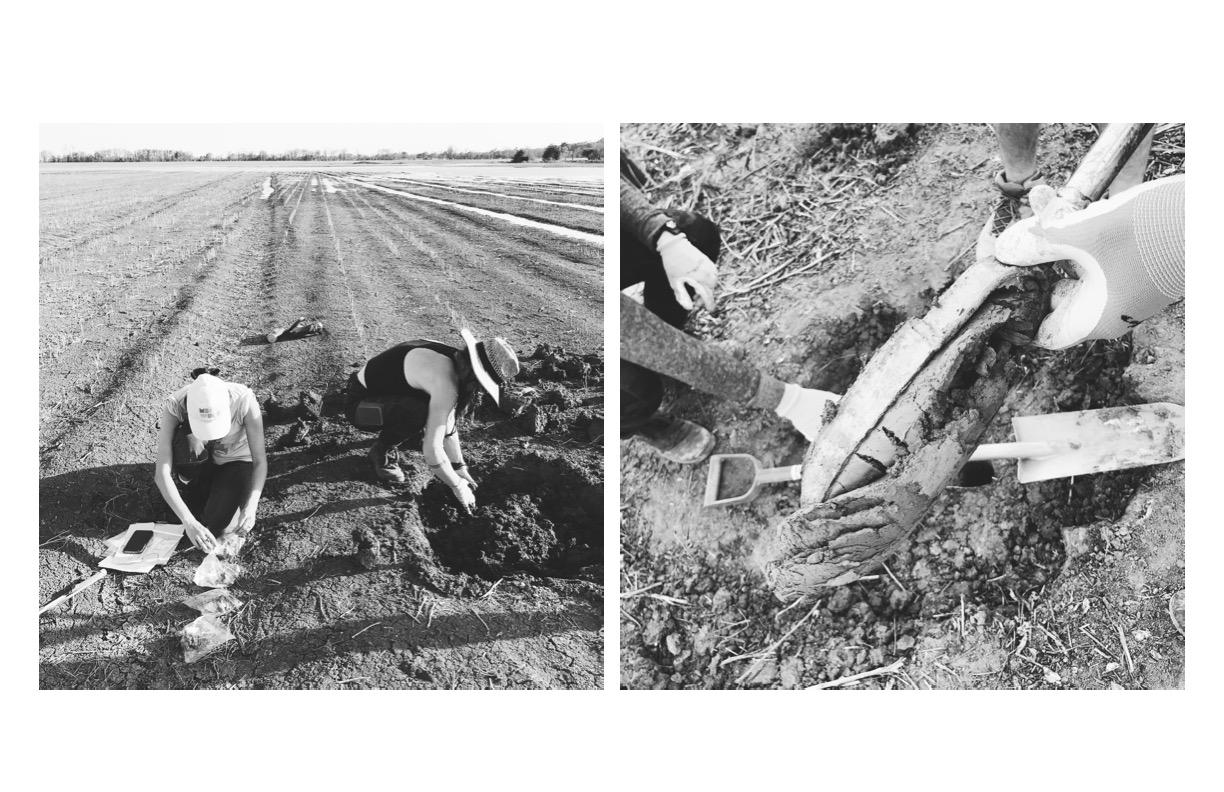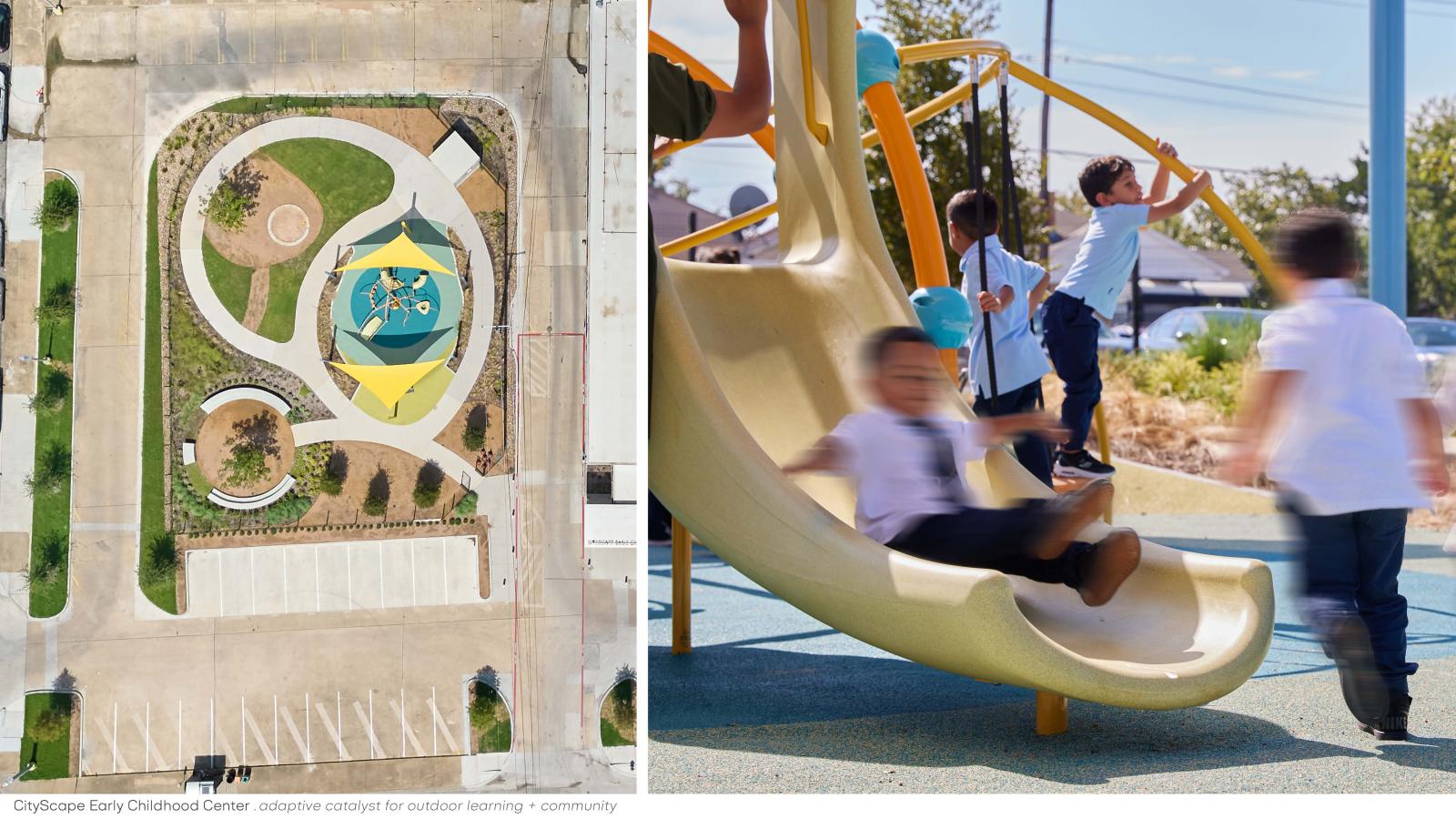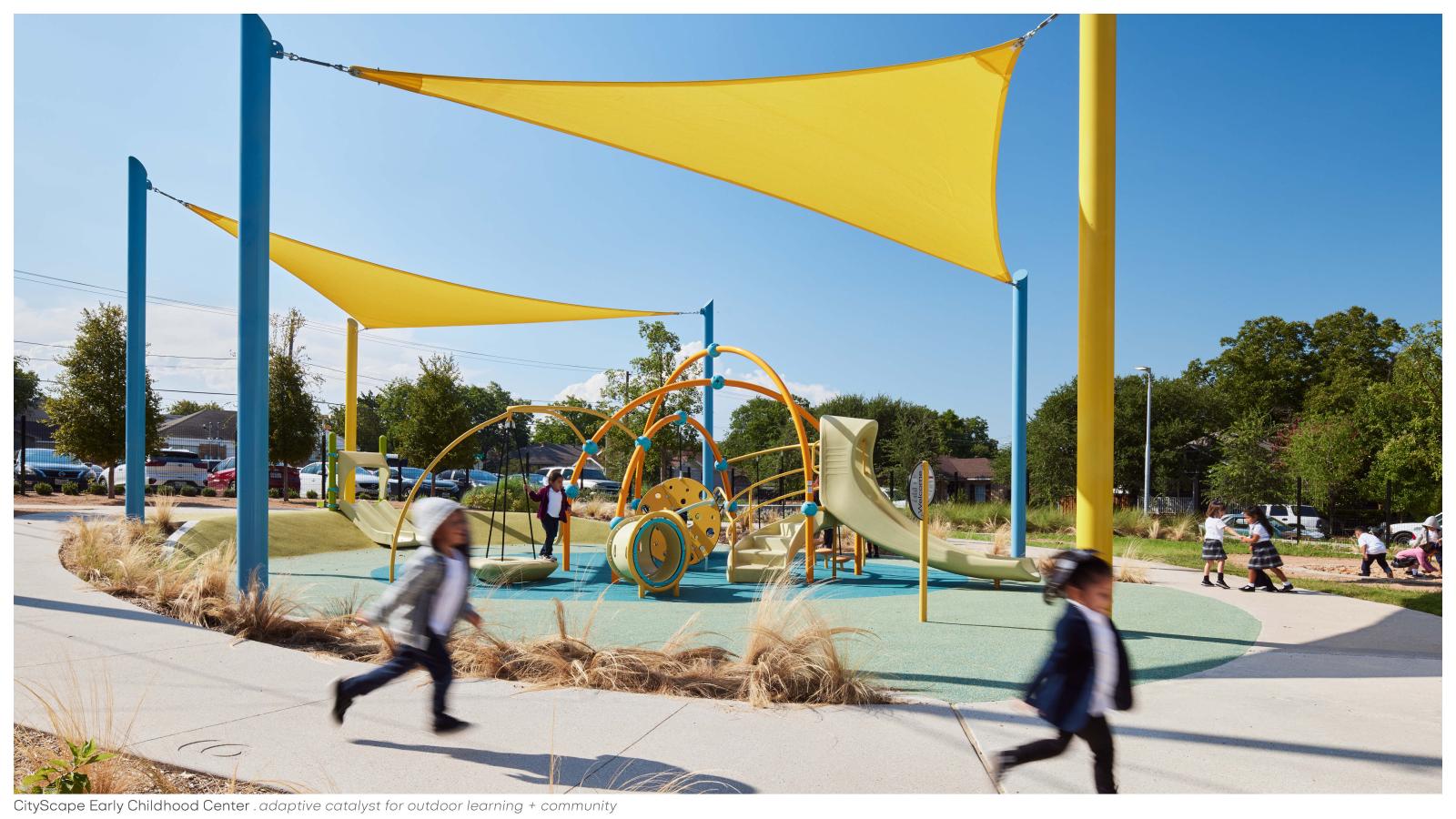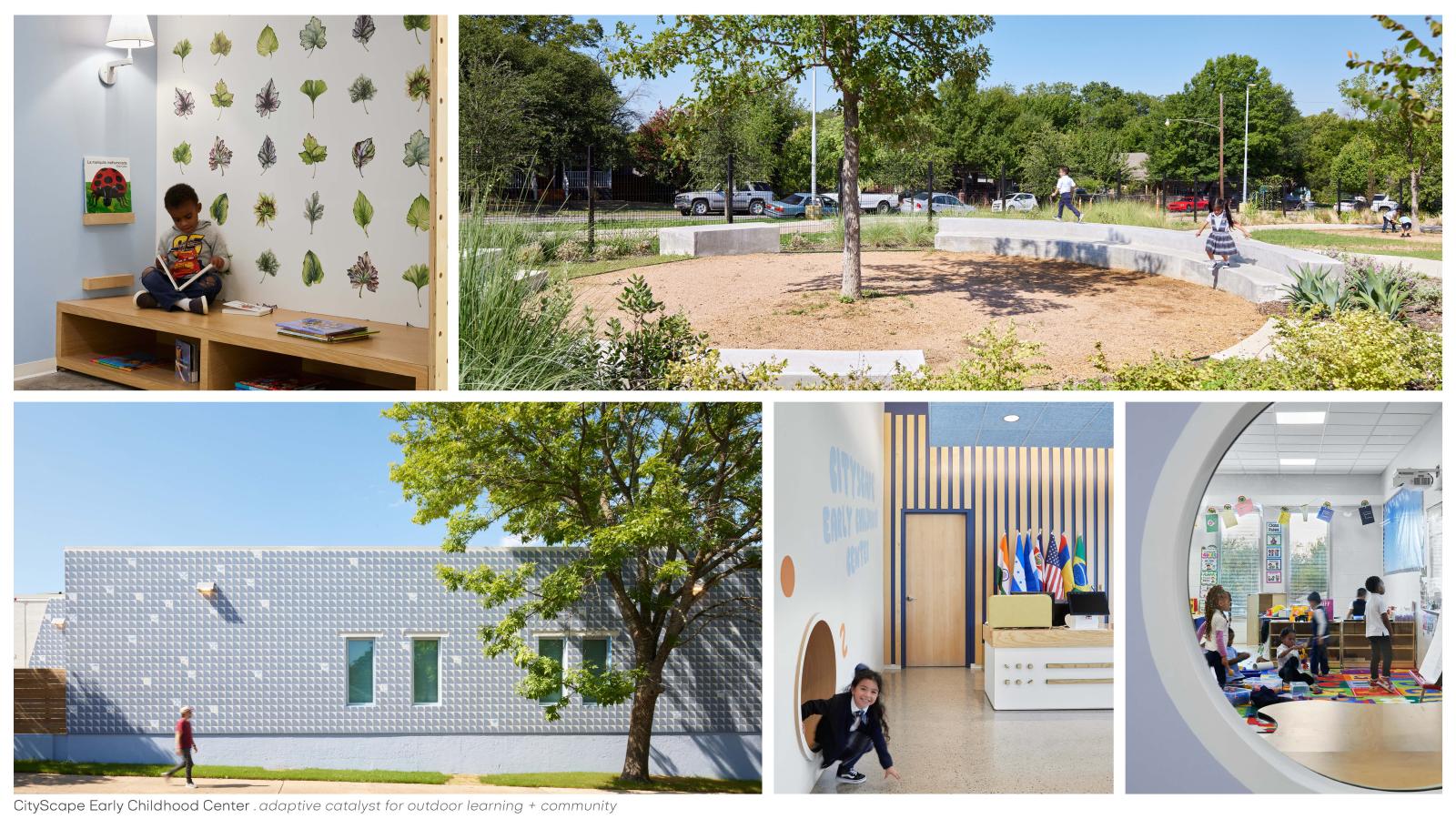2025 Texas ASLA Awards Honor Work by Phoebe Lickwar & Michael Averitt
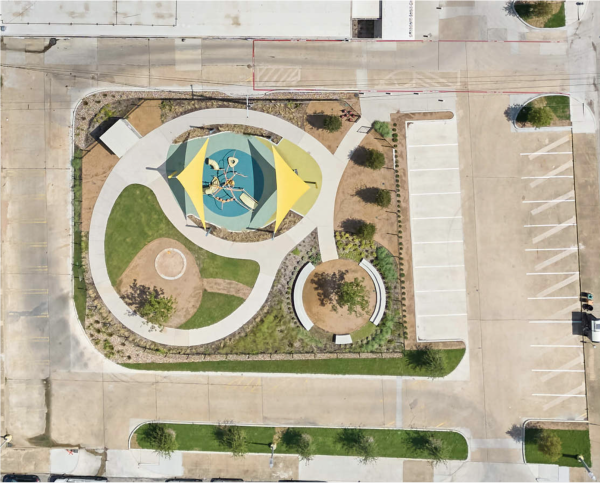
The Texas Chapter of the American Society of Landscape Architects (ASLA) recently granted Merit Awards to two projects by UT Austin Faculty: Canard Brake by Associate Professor and the Graduate Advisor for the Landscape Architecture Program Phoebe Lickwar’s studio FORGE Landscape Architecture and the CityScape Early Childhood Center by Assistant Professor of Practice Michael Averitt’s studio DELINEATOR. Both projects present novel approaches for land restoration and community stewardship.
Lickwar’s FORGE Landscape Architecture was honored with the 2025 ASLA Merit Award for Canard Brake: a model forest carbon conservation project in the Louisiana Delta within the Lower Mississippi Alluvial Valley (LMAV), the largest floodplain in the United States. The project demonstrates the role marginal farmland can play in mitigating climate change while also contributing to a regional conservation plan. Once laying claim to some of the richest alluvial soils in the world, the LMAV supported vast swathes of bottomland hardwood forest, grasslands, and wetland habitat for distinct human cultures and countless species of migratory birds, mammals, and aquatic life. Over the nineteenth and twentieth centuries, the natural wealth of the LMAV was first exploited for timber, and then by industrial agriculture. By the end of the twentieth century, only 25% of the 24 million acres of forest cover across the LMAV remained. While these figures paint a picture of immense loss of natural resources and biodiversity, the tide across the LMAV is beginning to turn, and as of January 2020, a growing 10% of the LMAV is under conservation.
Canard Brake, a 940-acre site located on the border of Catahoula and LaSalle parishes, contributes to this growing movement of land conservation through a unique partnership between a non-profit organization dedicated to climate action (ROOTS) and the USDA Wetlands Reserve Easement Program (WREP). Strategies included subsoiling and the seeding of a nurse crop of grasses, rushes, sedges, and forbs in varying compositions, considering pollinator, wildlife, and waterfowl habitat needs. The nurse crop, whose deep root systems extend up to twelve feet underground, achieves rapid carbon storage and provides valuable wildlife habitat while also improving and protecting soils from erosion, shading out invasive species, and creating an environment that is optimal for tree seedlings. The design includes a trail system, camps for recreation and research, shallow water areas for migratory birds, a green-tree reservoir, food plots for wildlife, an herbaceous nurse crop, and 240,000 trees.
Along with the Merit Award, FORGE Landscape Architecture was also granted the Climate Action Champion Green Ribbon for Ecosystem Restoration and Biodiversity, an honor that recognizes projects that demonstrate an exceptional effort towards designing for a better future in the areas of climate mitigation, climate resiliency, biodiversity, environmental equity, or environmental advocacy.
Michael Averitt and the DELINEATOR team’s work with CityScape Schools also actively heals and restores landscape damaged by previous usage, earning the project a 2025 Texas ASLA Merit Award as well. Repurposing a disused parking lot within a historic Dallas neighborhood, the CityScape Early Childhood Center is a varied, sensory-rich and welcoming landscape for educating and entertaining small children while engaging the community. Most of the students come from families in the immediate neighborhood, many whose parents must work but cannot afford typical daycare services prior to their children entering kindergarten.
The design incorporates extensive community engagement, distilling the hopes and desires of the educators, administrators, and neighbors in a programming and visioning report. DELINEATOR fulfills their aspirations by providing diverse opportunities for learning and play while creating a welcoming approach. The design reduces the amount of impermeable surface and increases student access to nature while also significantly reducing stormwater run-off and radiant heat from the site. Over 40% of the stormwater on the southern half of the property is captured on-site in bioswales and allowed to infiltrate into rain gardens, eliminating the need for additional subgrade drainage and providing relief to the city stormwater infrastructure.
Using the six feet of grade change across the new learning landscape, the design creates a series of linked use spaces connected by accessible paths and defined by subtle grade separation. Slopes and textural plantings are used to define the edges of the different spaces and create a dynamic and sensory-rich experience for the children as they move around within it. Accurate digital modeling of the proposal was used with virtual reality to simulate the perspective of a four-year-old child in selecting plants and designing site features to frame edges and create a sense of enclosure while still providing clear sightlines to teachers throughout the space. The active spaces, such as the more traditional playscape and the nature play area, are woven together with a fully accessible path network for walking, running, or tricycling. The outdoor classroom at the tree ring provides more defined instructional space using a simple two-terraced seat wall framed by flowering perennials and grasses, and the adjacent grove teaching area provides tables for outdoor projects that require work surfaces while being enclosed by a canopy of cedar elms. For creative play, a sand pit and “mud kitchen” are incorporated with spaces preserved for future additions of music and art-based play equipment.
Congratulations on the well-deserved Merit Awards!
